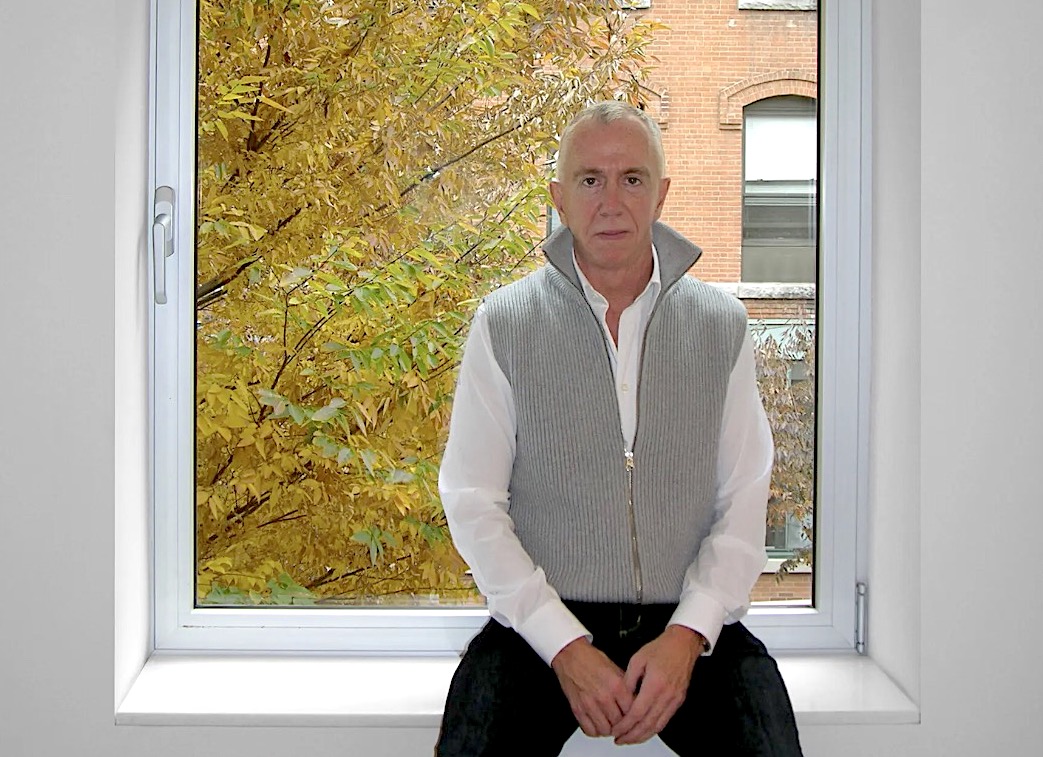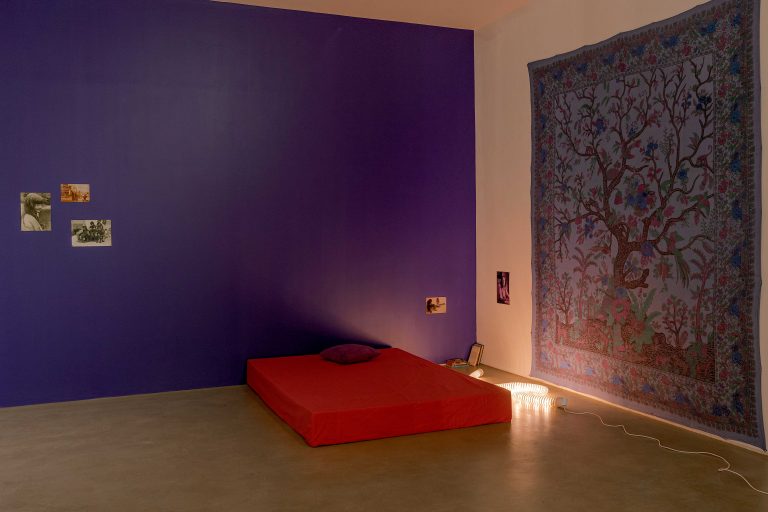The Last Post
2010 - Film & Video (Film & Video)
Shahzia Sikander
The Last Post was inspired by Sikander’s ongoing interest in the colonial history of the sub-continent and the British opium trade with China. In this animation, layers of images, abstract forms, meaning, and metaphorical associations slowly unfold at the same time that more visual myths are created. The identity of the protagonist, a red-coated official, is indeterminate and suggestive of both the mercantilist policies that led to the Opium Wars with China and the cultural authority claimed by the Company school of painting over colonial India. Though situated in a particular historical context, The Last Post remains an open-ended narrative with infinite possible interpretations. The work’s scope and complexity is expanded further by its sound element, which was created by Du Yun, an artist and composer based in New York City.
Shahzia Sikander is known for her richly layered and intricately detailed graphite, ink, and gouache paintings. She studied miniature painting in the late 1980s at the National College of Art in Lahore, Pakistan, with the forms and techniques of Indo-Persian miniatures heavily influencing her approach. Sikander’s practice explores the concepts of “East” and “West,” using traditional strategies of storytelling and themes of popular mythology to deconstruct the postcolonial legacy of the Indo-Persian region. In 2001, Sikander began to employ digital animation to create video works based on her drawings. Her practice traverses painting, drawing, animation, installation, and video, to radically rearticulate the tradition of miniature painting. Sikhander uses the technique to address contemporary issues, including the Western fear of Islam, the globalization of Western ways of living, and gender identity, focusing specifically on Muslim women in the West. The artist’s use of a traditional and scholarly approach to discuss the conflicts in the global condition creates a unique oeuvre–the digital animations, breathing new life into Mughal-era miniature painting.
Colors:
Related works featuring themes of: » Abstract Versus Figurative Art, » Bright/Vivid, » Conflict, » Feminism, » Pakistani-American
» see more

© » KADIST
Juliana Huxtable
2017Herculine’s Prophecy by Juliana Huxtable features a kneeling demon-figure on what appears to be a screen-print, placed on a wooden table, which has then been photographed and digitally altered to appear like a book cover, with a title and subtitle across the top, and a poem written across the bottom...

© » KADIST
Andrea Bowers
2015Bowers’ Radical Hospitality (2015) is a sculptural contradiction: its red and blue neon letters proclaim the words of the title, signaling openness and generosity, while the barbed wires that encircle the words give another message entirely...

© » KADIST
Lynn Hershman Leeson
2017Using the seminal 1958 film Vertigo as a launchpad, Lynn Hershman Leeson explores the blurred lines between fact and fantasy in VertiGhost , a film commissioned by the Fine Arts Museums in San Francisco...

© » KADIST
Claudia Joskowicz
2007The primary interest in the trilogy is Joskowicz’s use of cinematic space, with long tracking shots that portray resistance to habitual viewing experiences of film and television...
Other related works, blended automatically
» see more

© » KADIST
Juliana Huxtable
2017Herculine’s Prophecy by Juliana Huxtable features a kneeling demon-figure on what appears to be a screen-print, placed on a wooden table, which has then been photographed and digitally altered to appear like a book cover, with a title and subtitle across the top, and a poem written across the bottom...

© » KADIST
Andrea Bowers
2015Bowers’ Radical Hospitality (2015) is a sculptural contradiction: its red and blue neon letters proclaim the words of the title, signaling openness and generosity, while the barbed wires that encircle the words give another message entirely...

© » ARTLYST
Kara Walker
Brent Sikkema, the Manhattan art dealer renowned for representing artists such as Jeffrey Gibson and Kara Walker found dead The post Brent Sikkema – Visionary Art Dealer Of Jeffrey Gibson And Kara Walker Murdered appeared first on Artlyst ....
Related works sharing similar palette
» see more

© » KADIST
Bunny Rogers
2014In Rogers’ Columbine works, the artist explores the 1999 high school shooting that took place in Littleton, Colorado, claiming 34 victims...

© » ARTS EQUATOR
Weekly Southeast Asia Radar: New pandemic movements in SEA | ArtsEquator Thinking and Talking about Arts and Culture in Southeast Asia ArtsEquator Radar October 15, 2020 ArtsEquator’s Southeast Asia Radar features articles and posts about arts and culture in Southeast Asia, drawn from local and regional websites and publications – aggregated content from outside sources, so we are exposed to a multitude of voices in the region...
Related works from the » 2010's created around » New York
» see more

© » KADIST
Chris Wiley
2012Architectural details become abstracted renderings in Chris Wiley’s inkjet prints 11 and 20 (both 2012)...

© » KADIST
Oded Hirsch
2012Oded Hirsch’s video work Nothing New (2012) utilizes seemingly absurdist tropes to raise more trenchant questions about communal action and collective identity in modern day Israel...

© » KADIST
Hank Willis Thomas
2014South Africa Righteous Space by Hank Willis Thomas is concerned with history and identity, with the way race and ‘blackness’ has not only been informed but deliberately shaped and constructed by various forces – first through colonialism and slavery, and more recently through mass media and advertising – and reminds us of the financial and economic stakes that have always been involved in representations of race....

© » KADIST
Stephen G. Rhodes
2010For his series of digital collages Excerpt (Sealed)… Rhodes appropriated multiple images from mass media and then sprayed an X on top of their glass and frame...
Related works found in the same semantic group
» see more

© » KADIST
Humberto Diaz
2002The two works in the Kadist collection, Observador Pasivo and 3600 besos por hora by Diaz are culled from a vast compilation of videos and performances for the camera...

© » KADIST
Michael Armitage
2015In “And so it is” shows the image of a faceless man before a microphone, ready to deliver an important message...





